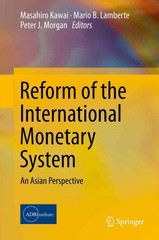Question
Question 1 An economy in long-run equilibrium experiences a temporary leftward shift in the short-run aggregate supply (SRAS) curve. Which of the following explains the
Question 1
An economy in long-run equilibrium experiences a temporary leftward shift in the short-run aggregate supply (SRAS) curve. Which of the following explains the self-adjustment of the economy in the long run? The positive supply shock will reduce output and increase unemployment, but once wages increase, the output will return to the full employment level. The negative supply shock will reduce output and increase unemployment, but once wages decrease, the output will return to the full employment level. The negative supply shock will increase output and decrease unemployment, but once wages decrease, the output will return to the full employment level. The positive supply shock will reduce output and unemployment, but once wages increase, the output will return to the full employment level. The negative supply shock will increase output and unemployment, but once wages decrease, the output will return to the full employment level.
Question 2
Assuming that the economy is initially in long-run equilibrium, which one of the following scenarios would result from a sudden increase in aggregate demand in the short run?
The economy will face inflation and a decrease in output. The economy will face depression and an increase in output. The economy will face stagflation and an increase in output. The economy will face inflation and an increase in output. The economy will face deflation and a decrease in output.
Question 3
What is true about movement along the aggregate supply curve in the short run?
There is an inverse relationship between inflation and the unemployment rate. There is no direct relationship between inflation and the unemployment rate. There is a positive relationship between inflation and the unemployment rate. An increase in inflation creates a demand shock that in turn increases the unemployment rate. There is an inverse relationship between the general price level and the wage rate.
Question 4
Which of the following could explain a rightward shift of the short-run aggregate supply curve?
An increase in business investment An increase in the personal income tax rate A nominal wage increase An increase in the price level A decrease in business regulation
Question 5
Which of the following accurately describes a limitation of fiscal policy?
The spending multiplier will always be more effective than the tax multiplier because of savings. The government can have no direct impact on aggregate demand in the economy. The government can influence the price level but not real output or aggregate demand. The government has the ability to slow inflation but not close a recessionary gap. There is always a time lag to discretionary fiscal policy between action and impact.
WHY OTHER OPTION IS INCORRECT EXPLAIN BRIEFLY
Step by Step Solution
There are 3 Steps involved in it
Step: 1

Get Instant Access to Expert-Tailored Solutions
See step-by-step solutions with expert insights and AI powered tools for academic success
Step: 2

Step: 3

Ace Your Homework with AI
Get the answers you need in no time with our AI-driven, step-by-step assistance
Get Started


